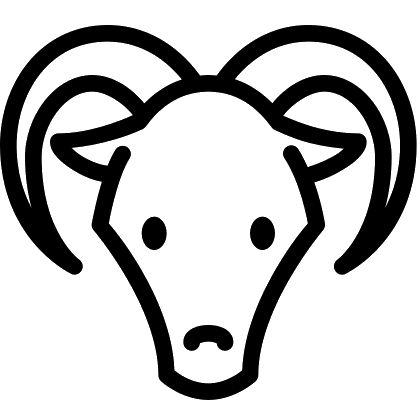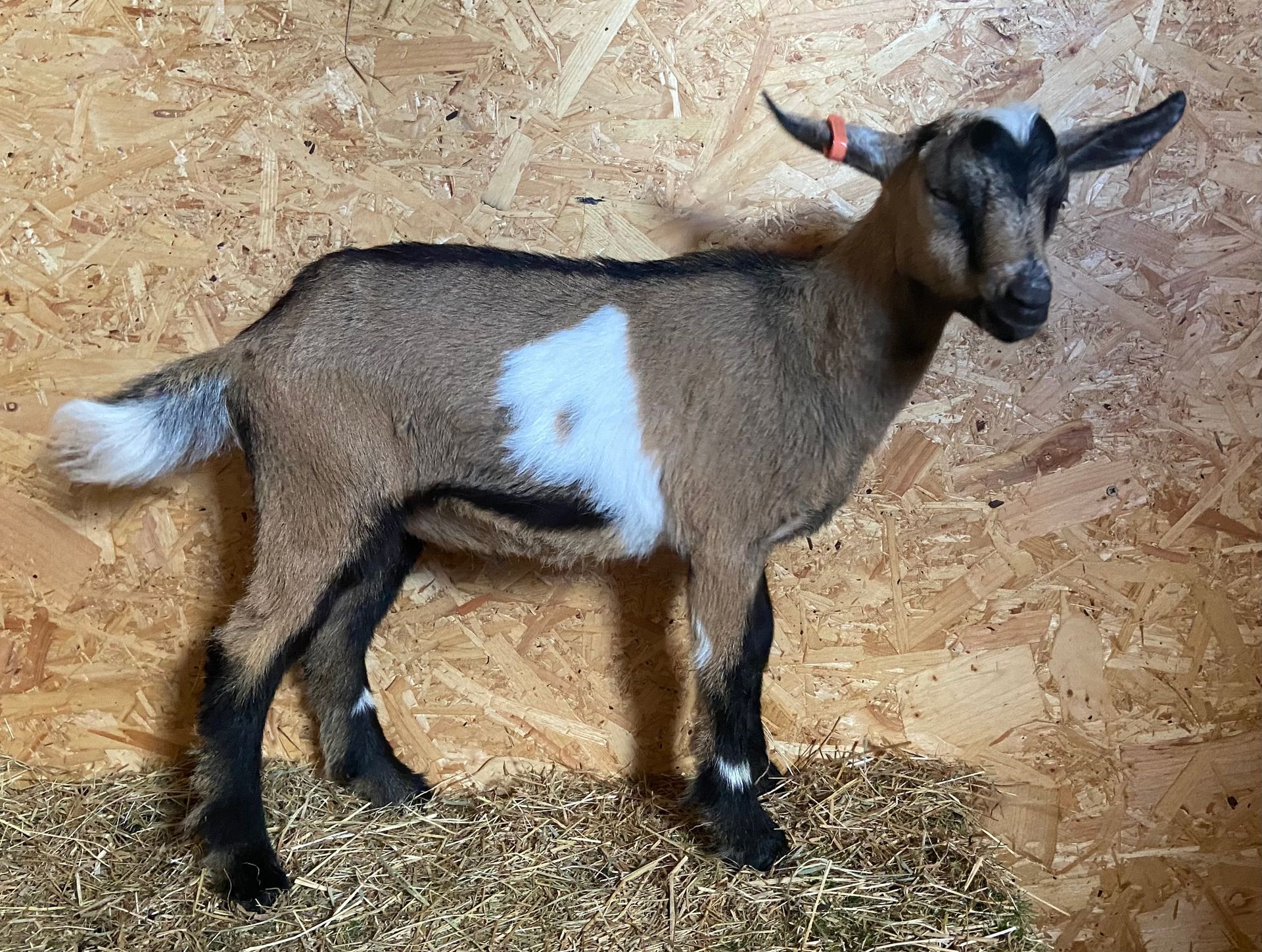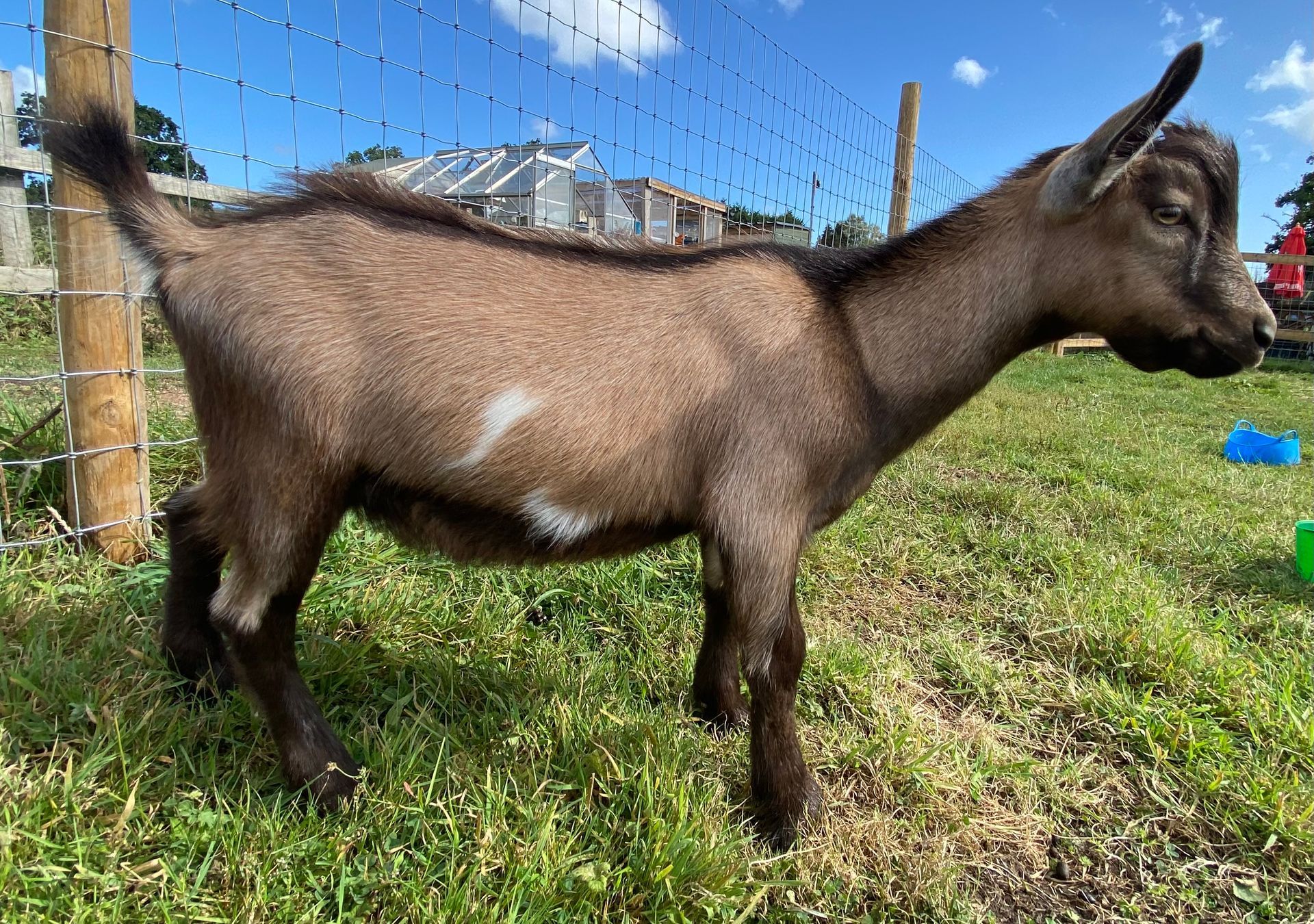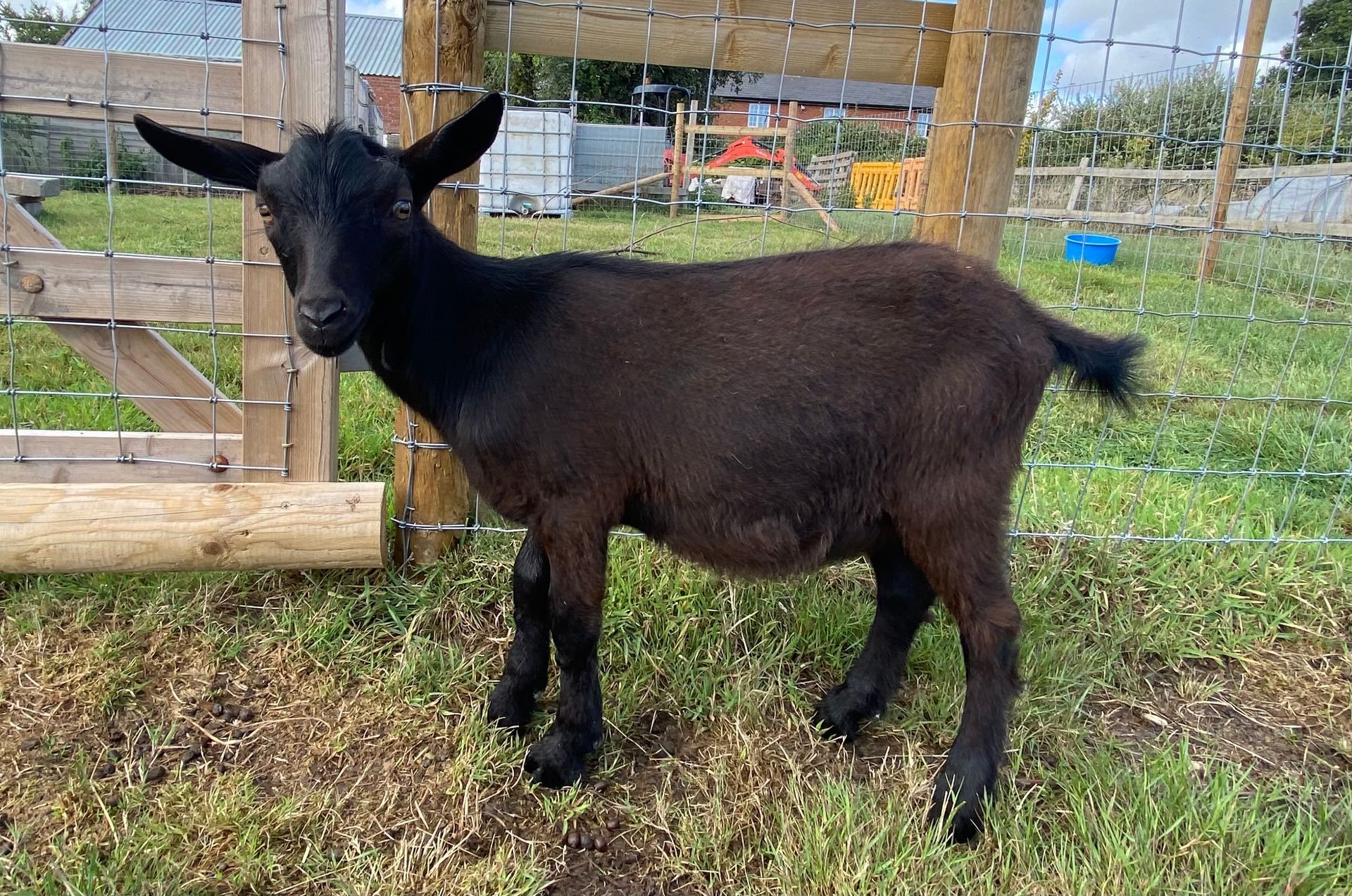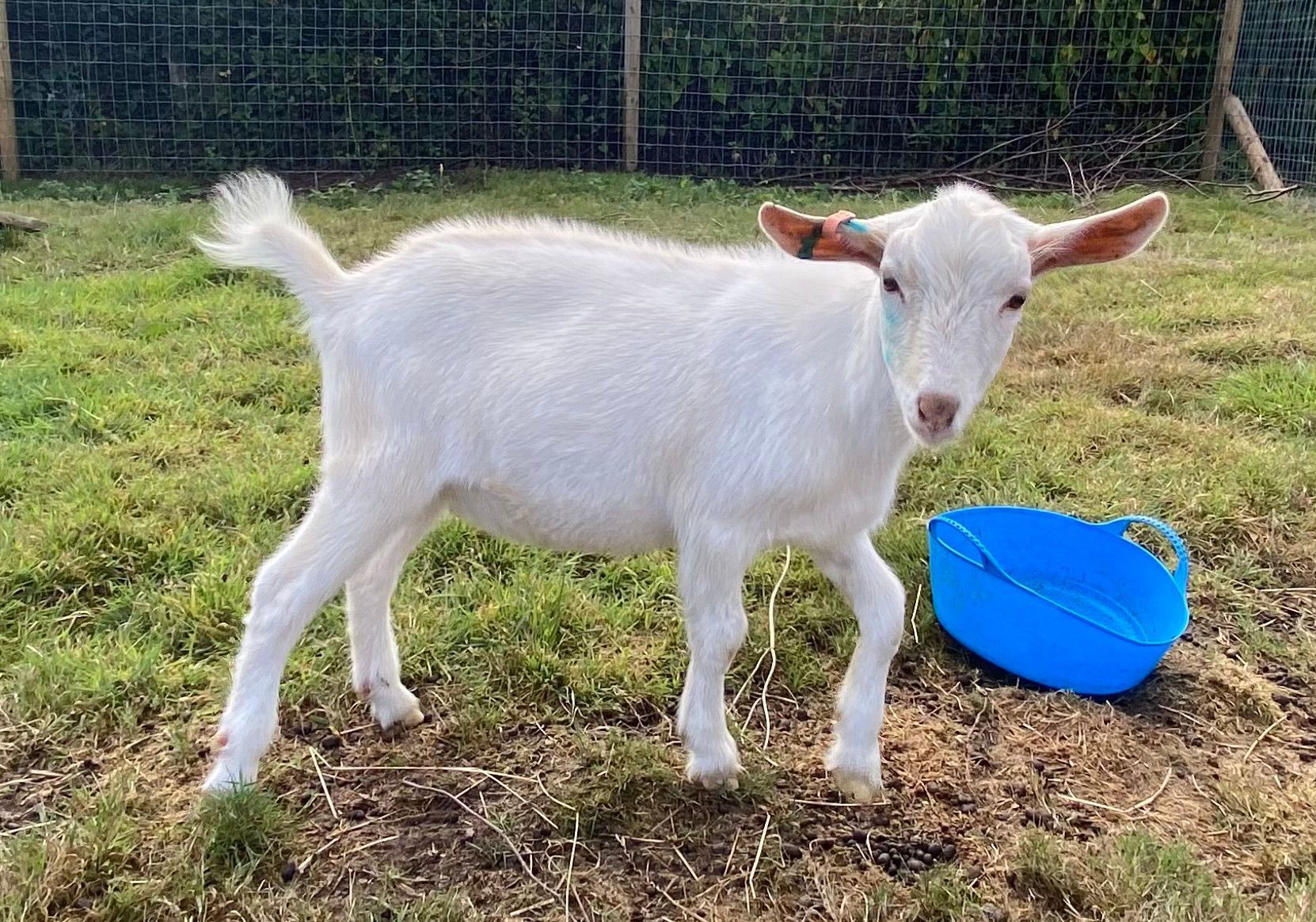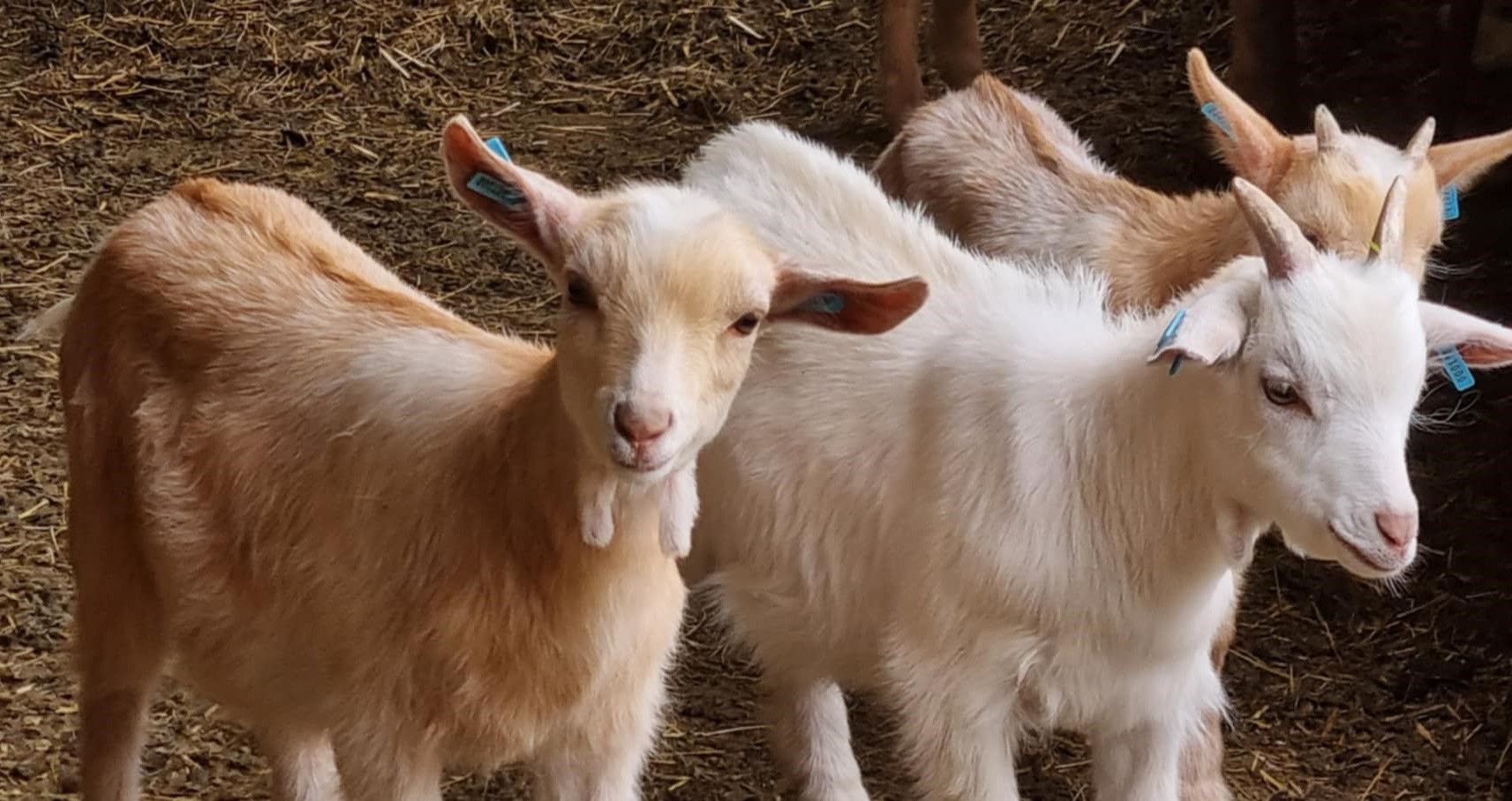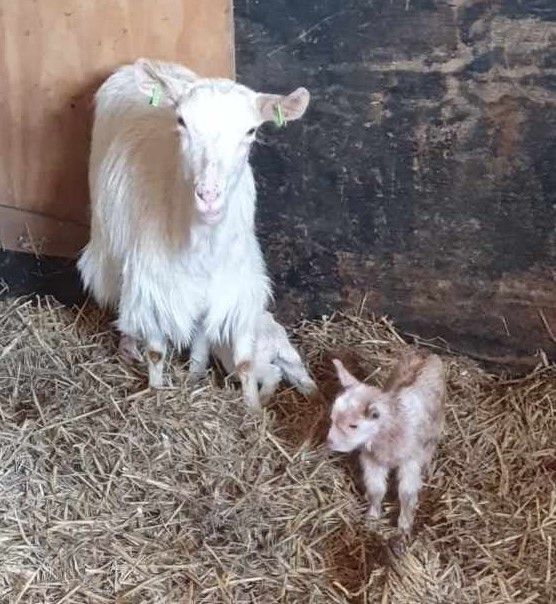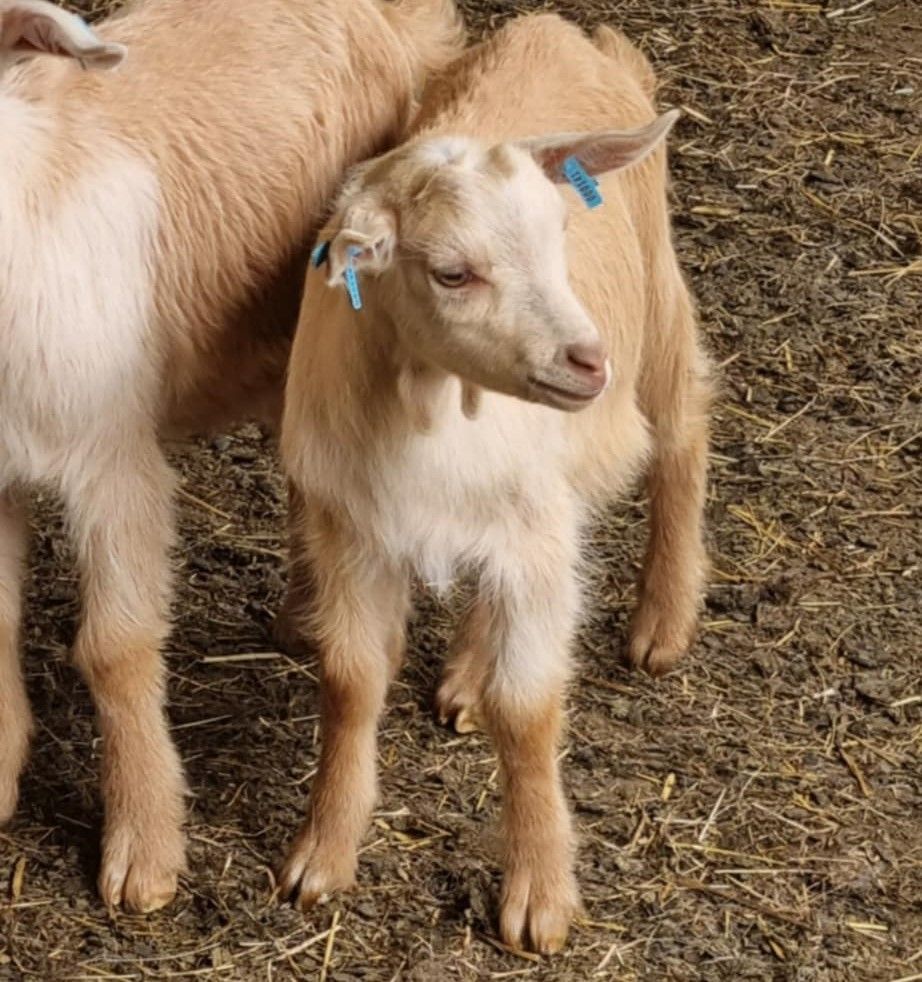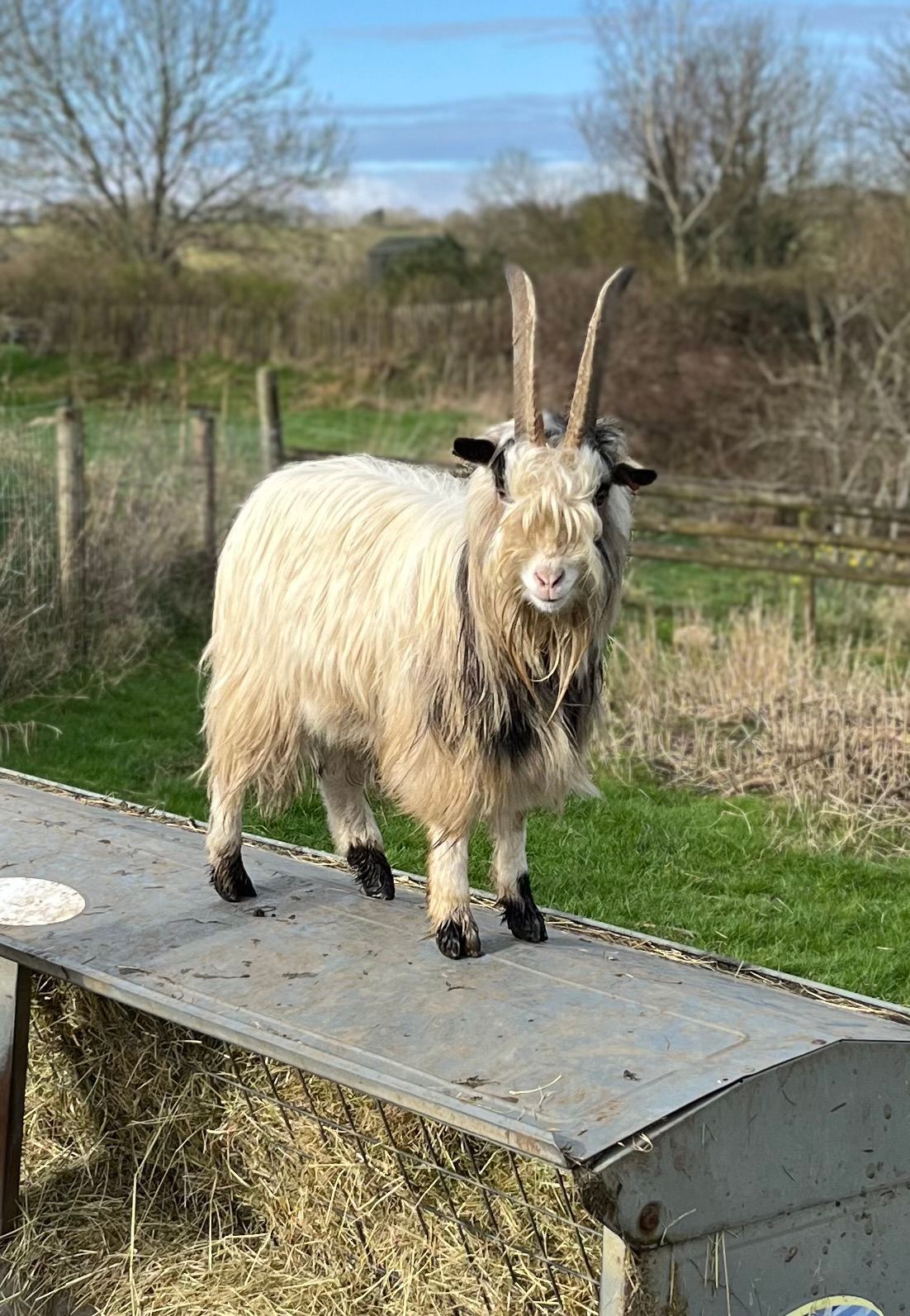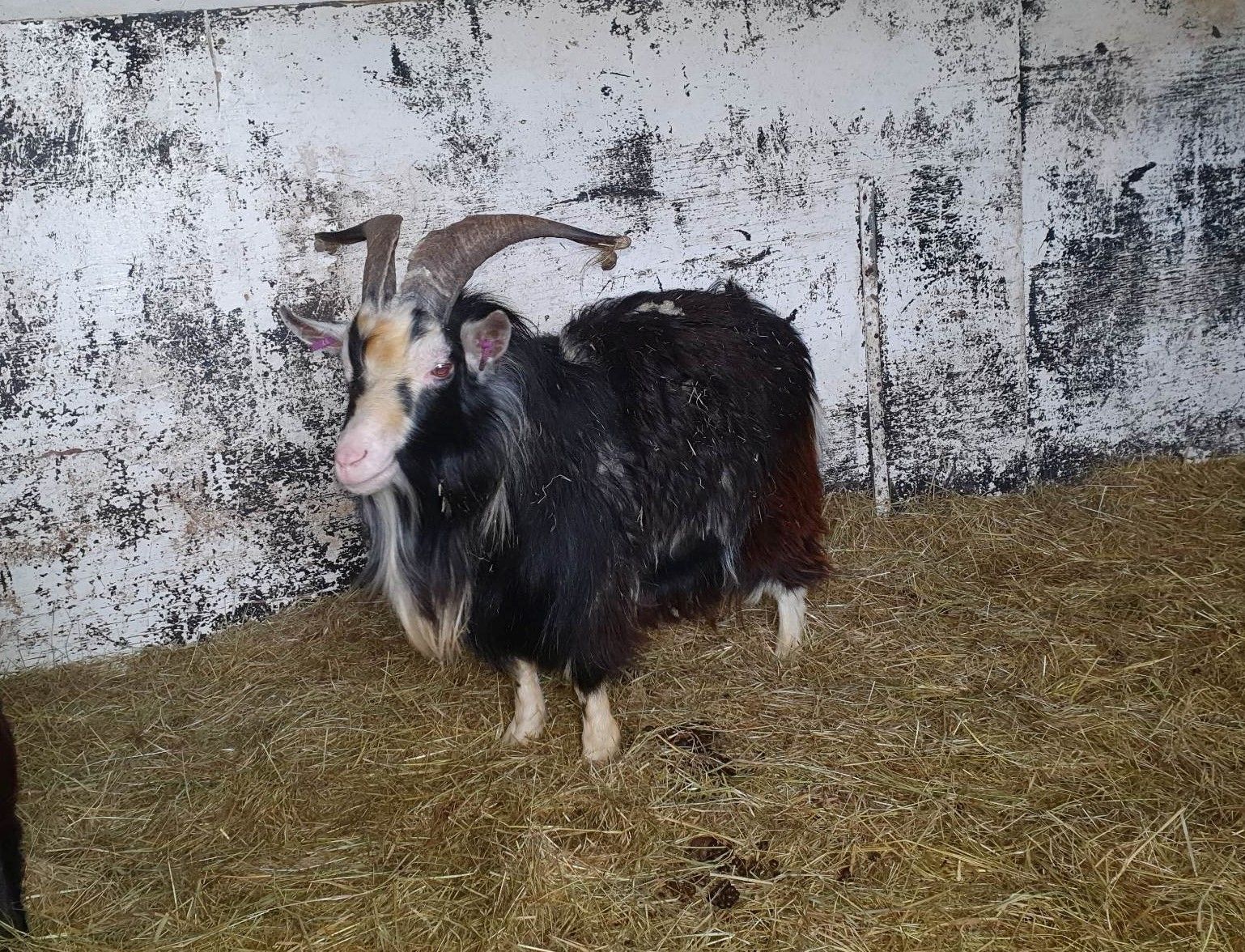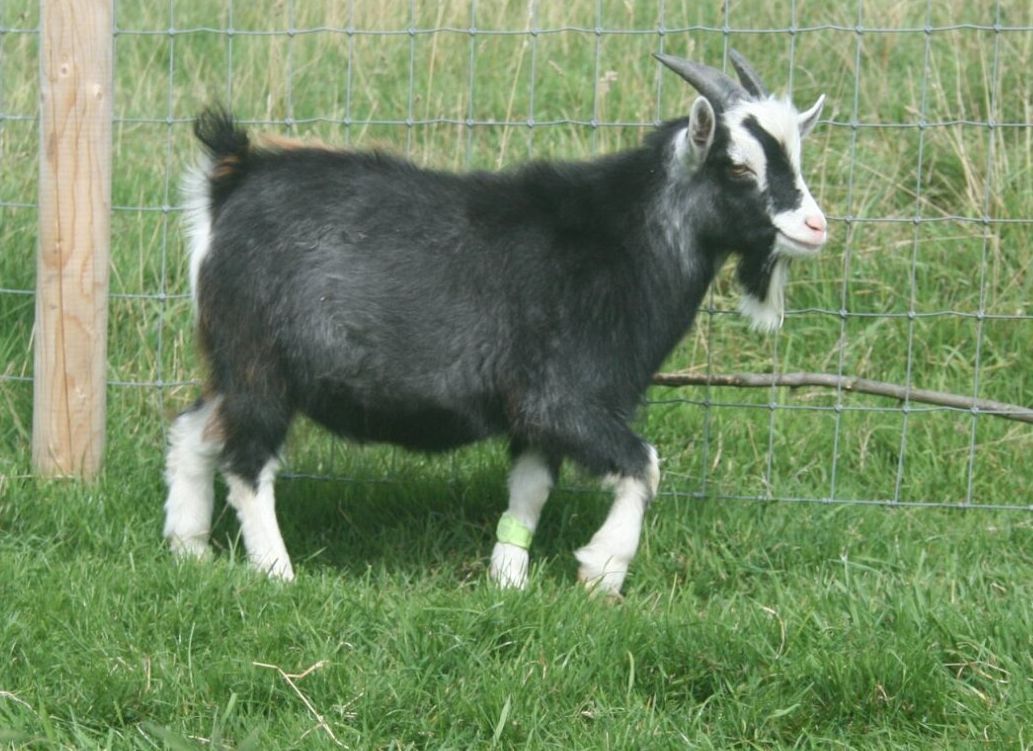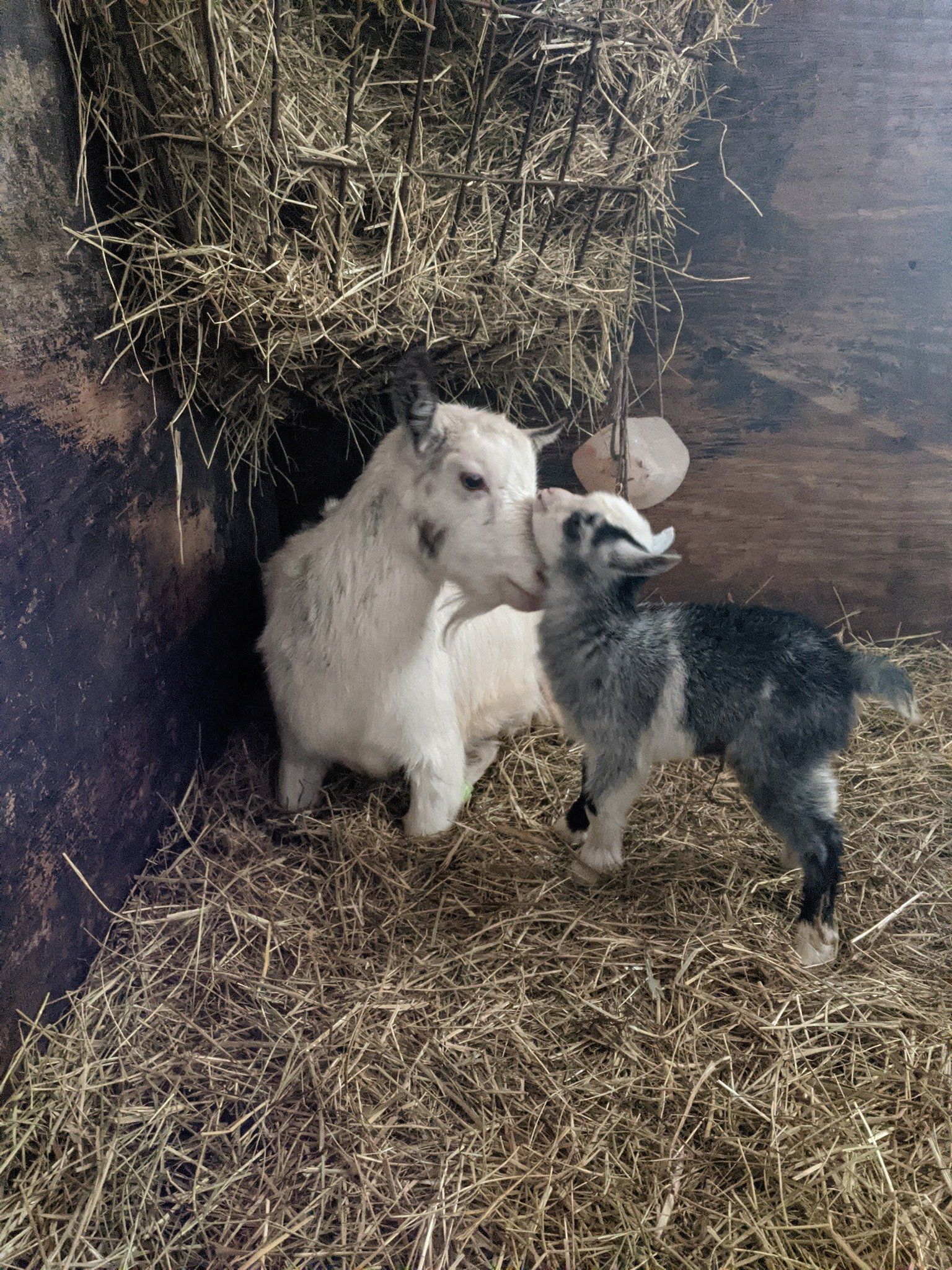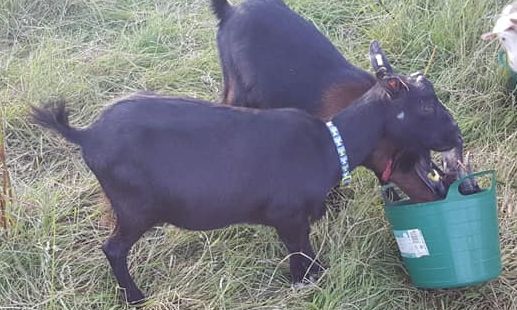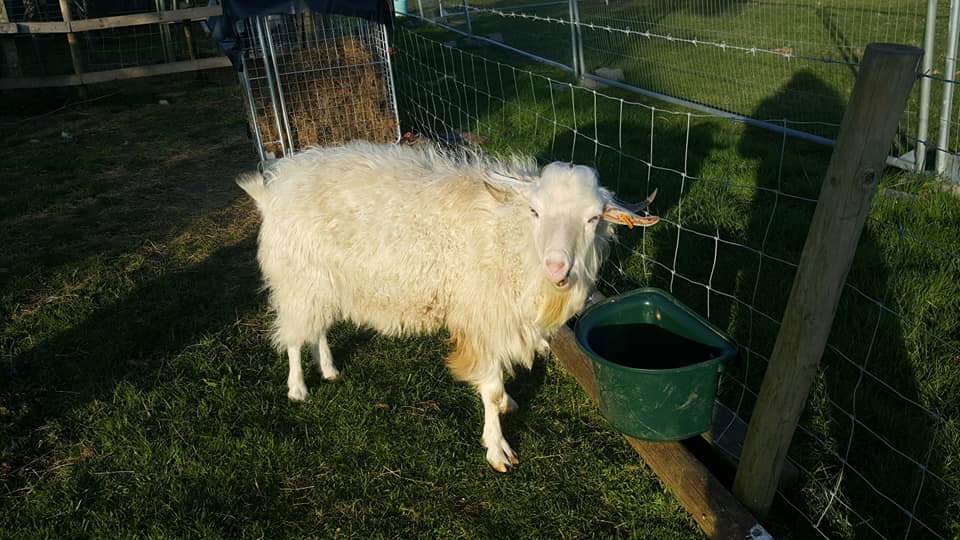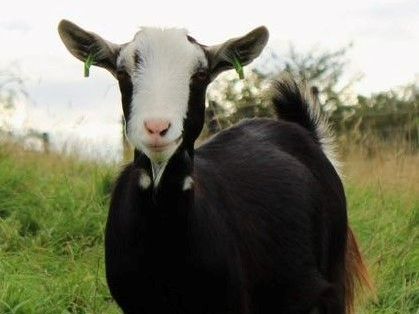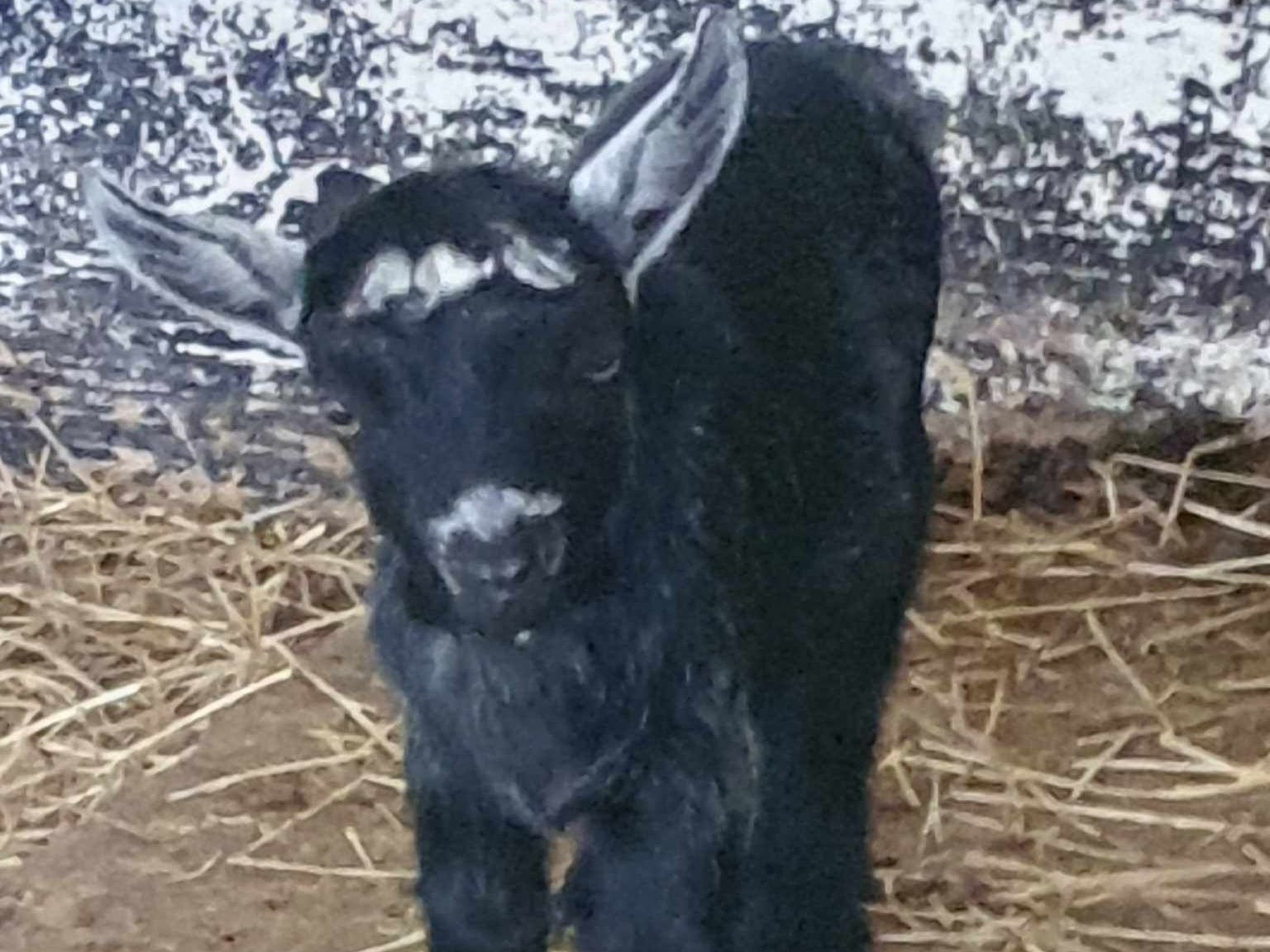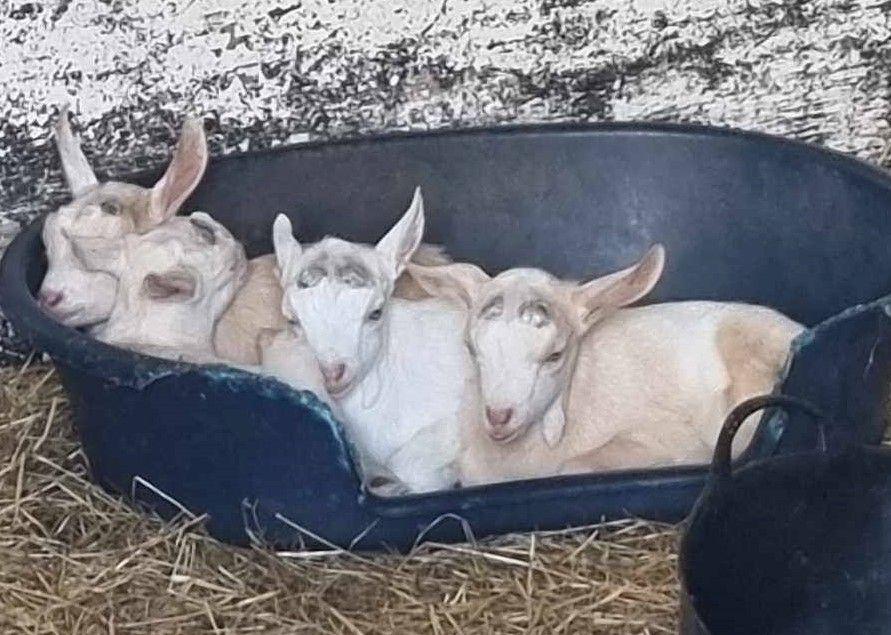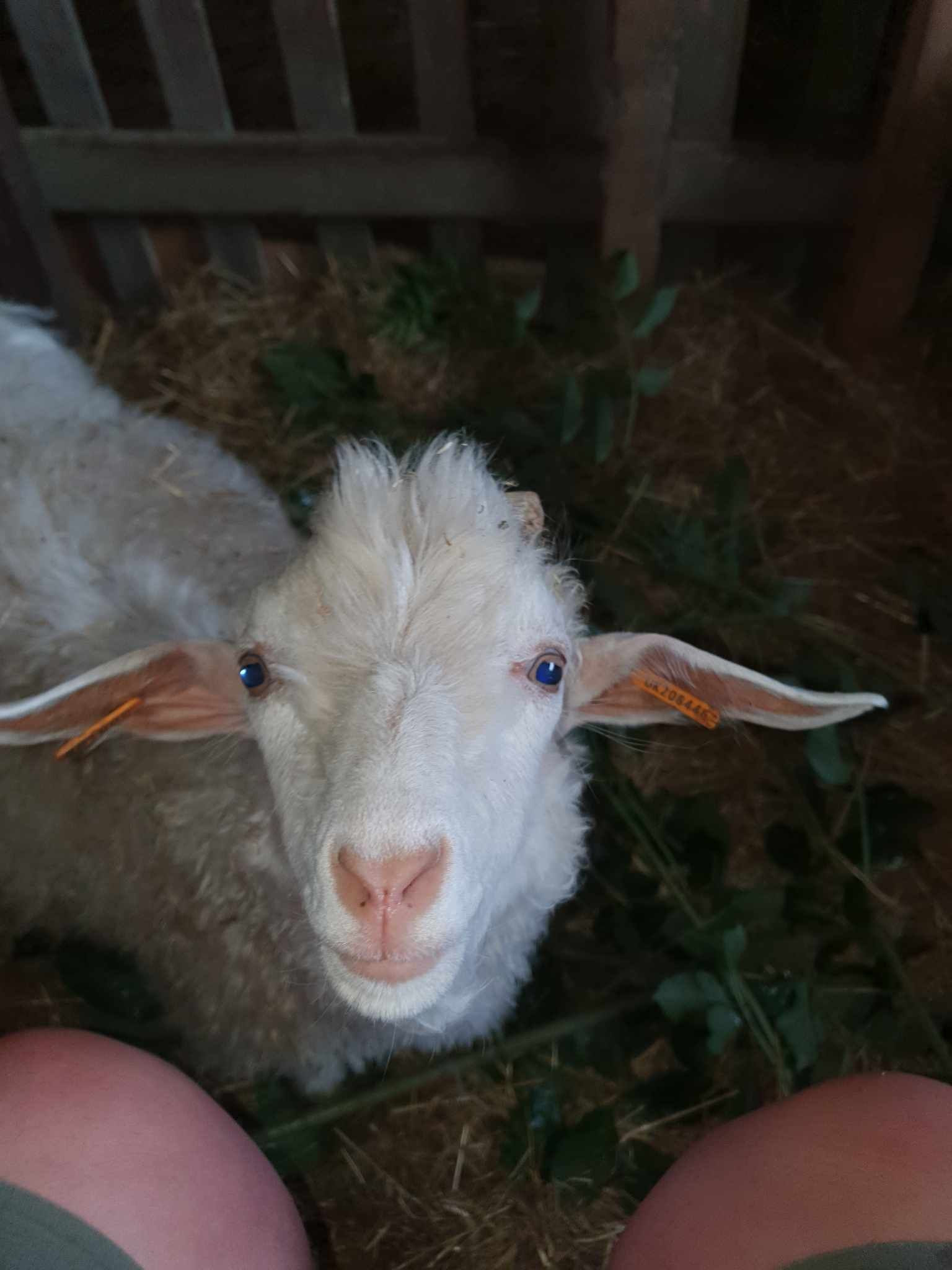The BDDG has its origins in the West African Dwarf goats (WADS) imported to the UK circa 1855, noted in Pegar (1885) as being present in Regents Park, Exhibited at Crystal palace in 1875 and kept and bred by a Sam Woodiwiss. These goats came from the West African location around Guinea, the Niger and Nigeria areas. It may also have contributions from other African Dwarfing goats from East & central Africa, those further east tend to be of the more slender type than the pygmy goat and many have influenced the Dairy WADS.
These goats are mentioned frequently in early publications;
1895 in Brehm’s Life of Animals “The Dwarf Goat This is the Dwarf Goat (Capra hircus of Northern reversa), which measures at most Africa. twenty-eight inches in length and twenty inches in height at the withers, and does not exceed fifty pounds in weight. It is 'one of the most graceful in physical form of the entire group. It has a stout body, short, vigorous legs, and a broad head. Dwarf Goats of both sexes have short horns, barely as long as a Man's finger. The fur is composed of rather short but thickset hair of dark color, the prevailing hues being black, mingled with hair of a subdued red tint. This breed is probably indigenous to the country lying between the White Nile and the Niger.”
“They brought with them two goats and some yams as a present to the white stranger. ... To-day I rose early, and having devoured the greater portion of one of good King Ogo's goats(the Niger goat is little larger than a rabbit) for my breakfast”
Empire review 1906
“the dwarf and wool goat “ Encyclopedia Britannica (1929)
In its location of origin the WAD goat is a small hardy goat that is used by families in a sustenance economy, It may share its origins in the pygmy goat (PG) of the same area the PG gaining popularity as pet goat However the two breeds are noted as distinct by the South African Veterinary Association in 1933 “a pygmy goat akin to the dwarf goat of Guinea”.
The slendar WAD type in its native environment is used primarily as a dairy goat and it is these characteristics along with the typical phenotypical features that the BDDG Society are keen to preserve.
Some dedicated dwarf dairy goat enthusiasts have been able to locate dwarf dairy type goats in the PG population and have selected those with characteristics that are felt to be beneficial for this mini dairy breed.
These are:-
Dairy type body formation, long legs, slim body, good productive type udder, running in a deer like manner.
Research has shown native WADs have some distinct features that other breeds of goat do not. Currently the known features are;
1 Genetic mutation that allows multiple births, often a litter size up to 5
2 Prevalence of supernumery teats, records of up to 6. These teats seem to generally be functional.
3 Early maturity, females ready to breed at 9-12 months
4 Ability to ovulate even when malnourished
5 Non-seasonal breeders (ability to cycle and breed all year)
6 Very high resilience to pathogenic worms.
7 Show a different αs1-Casein Polymorphism which may be of use where milk protein allergies are present in the human population
8 Higher fat and protein content in their milk than other breeds Fat @ 6.5% protein 3.9%
It is likely that these features have been influenced by the harsh conditions the goats encounter in use in their native environment and survival selection for these traits has fixed them within the breed. This would follow expected evolutionary principles.
1-5 in particular are likely to have influenced the fat content of the milk which is extremely high. A high fat content would allow the WADs to feed the large litters and help a high survival rate, meat goats often have this characteristics but only lactate for a short period WADs/DD/ND are able to remain in lactation for an extended period. They are also able to lactate this creamy milk on poor forage/feed intake.
However, to accommodate large litter size survivability it has been demonstrated that an increase feed protein quality in mid to late gestation is beneficial to litter size, lactation and therefore survivability.
As WADS and BDDG are likely to be kept on restricted pasture their ability to thrive on restricted forage & their ability to resist worms is a positive point. However, the BDDGS should not allow this to become a factor that means potential owners feel justified in allowing poor husbandry.
WADS/DDG seem to come in a variety of colours, including eye colour. Are generally short haired in their native environment and horned, although evidence has emerged that EAD goats are frequently polled .
For those looking for the difference in Pygmy and Dwarf Dairy goats the differences are largely genetic. PG are stated in the breed standard as "The pygmy goat is hardy, good natured, genetically small, cobby and compact. Head, neck and legs are short in relation to body length." this describes to perfection Achondroplasia dwarfism. Dwarf dairy goats should be in proportion believe to be caused by a pituitary hypoplasia dwarfing mechanism . However, over the years both in Africa & the UK the two types have been interbred. So we can look to good milk producers who also show achondroplasia, but overall we are looking for in proportion mini goats. African research also demonstrates a considerable mix of standard size goats in their miniatures so the genetic are complex.
Constitution
1. Name The Name of the Society shall be called The British Dwarf Dairy Goat Society
2. Objectives The objectives of the Society are to:
a) Maintain an association of those interested in the origin, history, dispersion and development of the breed known as The British Dwarf Dairy Goat and its variants.
b) Promote and encourage the study of The British Dwarf Dairy Goat breeding and breed refinement, historical distribution, and related topics.
c) Promote the preservation, security and accessibility of relevant public and private archival and other material, or other media.
d) Publish research findings and other relevant information in a Society Magazine, online or other appropriate publication.
In furtherance of the above objectives the Society may:
I. Organise meetings, shows, training sessions and lectures
II. Build up collections of books and other items
III. Preserve, transcribe and publish source material
IV. Collaborate with individuals, organisations, concerned with the topics covered in b) above
3. Membership
a) Membership of the Society shall be open to any individual showing genuine interest in the Society’s objectives.
b) Subscriptions shall be payable at a time and rate determined by the Society’s Executive Committee subject to the approval at the Society’s Annual General Meeting (AGM).
c) The Society’s Executive Committee may withdraw membership from members whose activities are considered prejudicial to the Society. A suspended member has a right of appeal at an Annual or Extraordinary General Meeting.
4. Management of the Society
a) The Society shall be administered by an Executive Committee consisting of up to 4 members, including a Chairman, Secretary and Treasurer. A quorum shall be 2 members.
b) The officers and other members of the Executive Committee shall be elected annually at the AGM. Nominations shall be submitted to the Secretary not less than 30 days before the meeting takes place. If insufficient nominations have been received prior to the meeting the Chairman may accept nominations at the meeting from the floor.
c) The Executive Committee shall have the power to co-opt additional members to fill vacancies or for some other purpose provided that the maximum number of Executive Committee members does not exceed 8.
d) Only fully paid-up members of the Society may vote at a General Meeting.
e) The AGM shall appoint an individual to independently examine the Society’s accounts at the end of the Society’s financial year ending on 30st June
5. General Meetings An Annual General Meeting of the Society shall be held each year no later than 31st August at a time and place determined by the Committee. Notice of the AGM shall be issued to all members of the Society not less than four weeks in advance specifying the business of the Meeting. The business of the AGM shall include:
a) a statement of the results of the ballot for Executive Committee members for the ensuing year.
b) receipt of the Committees’ report on the activities of the Society during the preceding year.
c) receipt of the Society’s statement of accounts for the year together with a report of the independent examination of the Society’s accounts
d) approval of the statement of accounts.
Special General Meeting may be convened at the request of the Executive Committee or 5 Members with prior written notice issued at least 56 days beforehand. A quorum at such a meeting shall be not less than 30% of the membership.
6. Amendments to this Constitution
The Constitution may be amended only at an AGM or an SGM provided the appropriate notice has been given. Amendments are only valid if supported by a two-thirds majority of those present.
7. Minutes The Executive Committee shall cause to be kept minutes of all General and Executive Committee meetings, which shall include a record of those present and of all Resolutions put and the decisions made, these minutes to be kept in an agreed form. The previous two years minutes shall be available at all General and Executive Committee Meetings. The minutes shall be confirmed at the next meeting and signed by the Chairman of that meeting as correct. Copies shall be made available to all Committee members.
8. Finance
a) All income and property of the Society shall be applied solely towards the promotion and execution of the objectives set out in Clause 2 above. No officer or member shall receive disbursements from the Society’s funds unless it is by way of reasonable out-of-pocket expenses incurred on the Society’s behalf.
b) The Executive Committee, or the Treasurer on its behalf, shall be responsible for the administration of the Society’s funds and assets, and for books of accounts of the Society. The Treasurer shall cause proper books of accounts to be kept with respect of all sums of money received and expended by the Society.
c) The Society shall keep its funds at the HSBC Bank and appoint three authorised signatories, the signatures of any two being required on cheques and other documents.
9. Trustees The Executive Committee may appoint not less than three people to hold property in trust for the Society.
10. Dissolution The Society may be dissolved only at an AGM or an SGM, called for the purpose, by a resolution supported by three-quarters of those present. The resolution must specify the disposal of the Society’s collections and other assets after debts and liabilities have been settled. This may involve their transfer to an appropriate organisation or institution with objectives compatible with those of the Society.
Rules
1 All members will aim to improve British Dwarf Dairy Goats and must not make claims that their goats are Nigerian Dwarfs (updated 6/7/2022) .
2 Membership is granted to those paying the membership fees as set by the BDDGS. Members must have and provide a UK address. (updated 13/1/2023)
3 Goats will be registered according to the breed standards of the BDDGS. The primary breed of the BDDGS is the WAD type dairy goat.
Offspring of registered parents
Offspring of registered parents must be registered by the breeder within 12 months of birth and before leaving the breeder's holding.
Registration must be accompanied with one photo of the animal for identification plus ear tag in place, with all of the number visible (may need 2 photos).
They will be eligible for the 4 generation rule (no grading of future offspring required automatic inclusion as Grade 1) if they meet Grade 1 criteria.
Late registration will be considered on DNA proof of parentage. If there is a claim of registered parents in a goat registered after 12 months and no DNA proof is given, then the parents will only be on the pedigree as parent of X (name of goat being registered), not as the registered name.
Late registered goats may be graded but will not be eligible for Grade one, for 4 generations. Effectively the clock will be reset and they will be considered entry level registrations.
Where a stud billy has been used which is not owned by the breeder, a stud certificate must be submitted with registration.
Offspring of non-registered parents
Offspring of non-registered parents, or one registered parent. Can be graded or ungraded. Their offspring if bred to another registered goat will be eligible for the 4 generation rule if they meet Grade 1 criteria.
******************************
Registrations must be completed within 6 months of submission where there are queries sent to the registering party.
(updated 6/7/2022)
4 Other mini dairy breeds are invited to join the BDDGS on submission of a breed standard and statement of intent. This will be considered by the committee.
All goats used in breeding towards a mini dairy standard, within the BDDGS, must initially have 3 generations of British Dwarf dairy goat society registered parents on the sires side and 3 generations of registered large dairy stock on the dams side, for example Toggenburg, Anglo Nubian, Saanen, or other recognised UK dairy goat. Registration must be with the breed society of that specific breed. No goat will obtain full mini status until at least 3 generations of hybridisation has occurred and it must meet the BDDGS approved criteria, and will be known as a Mini Saanen etc. where prior approval of the breed standard and statement of intent has been obtained. Any outcross to a different mini or Dwarf Dairy will be a Dwarf Dairy. Mini breeds, will be subject to grading as per the BDDGS approved standard for that mini breed.
A breed standard and statement of intent should include the method and percentages of hybridisations as well as phenological characteristics. It must further include proposals on ensuring the safety of the goats where there is potential to breed a large goat to a much smaller one and how those issue will be resolved in order to meet welfare considerations.
Any Dwarf dairy crossed with a dairy type without the 3 generational history on both sides or where a breed standard and statement of intent has not been agreed will be eligible for registration under the existing Dwarf Dairy grading system.
Should members feel that they have a specific case outside of the above rules, they may request the committee considers the individual circumstances and request for registration, in writing to the secretary, to be brought before the committee in due course. The committee may request additional information as they see fit. (Updated 2/8/2020)
5 The BDDGS will issue a registration certificate and pedigree
6 On selling Dwarf Dairy goats members will provide a copy of the pedigree of the goat as well as its registration level. They will also be responsible for the first year’s membership fees for the BDDGS for the new buyer (updated 14/1/2022)
7 Prefixes/Suffixes must be registered with the BDDGS. Prefix/Suffixes are used before the name of an animal bred by the prefix owner eg Brambletoes Flicker or after if an animal was not bred by the owner but is registered with the BDDGS , by that owner eg Flicker of Brambletoes. Once registered with the BDDGS a Prefix or Suffix cannot be changed. (updated 11/8/2020)
8 Goats will be CAE tested negative for shows. A certificate copy will accompany show registration.
9 Stud certificates physically or via the online system of the BDDGS must be issued at time of service.
10. Noncompliance of these rules may result in a disciplinary hearing before the committee which in extreme situations may result in membership being withdrawn.
11 These rules many be changed from time to time by the committee. The committee will notify members of changes via our newsletters, online or by other appropriate means.
(Last updated 6/7/2022)
Breed Standard
The British Dwarf Dairy Goat originates from the West African Dwarf goats (WAD) of a dairy variety as opposed to those known in the UK as Pygmy types, (also descended from WAD meat types). The dwarf goat has been recorded in England since the 19th century and the two variants have been recognised worldwide. In the UK both types have been interbred and it is the BDDGS’s intention to isolate the dairy type from the mix. Dairy characteristics are highly hereditable and therefore registration will focus of these characteristics, in small goats of WAD type within the UK.
Initial registration is from birth to 12 months. From 12-24 months each goat will be assessed and graded. On attaining grade 1 for 4 generations for both parents, any offspring will automatically be grade 1 and classed a British Dwarf dairy goat at birth.
Grading will be undertaken by the committee from photos of the front, back, top view, both sides and udders
Grade 1 fits the full standard fir a British Dwarf Dairy Goat
Grade 2 one to three minor faults
Grade 3 three to five minor faults
Entry any miniature goat
The British Dwarf Dairy Goat should exhibit proportions similar to any dairy breed goat, but in miniature. Proportions should be well balanced. It’s height should not exceed 22 ½ inches at the withers for females and 23 1/2 for males. British Dwarf Dairy Goat should be capable of producing high quality milk in quantities of at least 1 litre a day for 250 days post kidding. High butterfat content is a characteristic of the WAD dairy breed and this should be aimed for.
Personality should be gregarious, easy to handle and bright.
Udders should be a good size and conformation in females. Supernumerary teats are common in Wad goats and are therefore not a fault as they may be genetically linked to the WAD ability to produce multiple offspring due to their specific genetic makeup. Teats should be a good dairy milking size.
The face should be narrow, flat or slightly dished, with erect ears. Any coat colour, colour combination or pattern and length is permitted. Eyes can be blue or brown. British Dwarf Dairy Goats may be horned, polled or disbudded.
Faults
Height above the standard (1 point per inch)
Pot-bellied appearance (1point)
Disproportionate (1 point)
Floppy ears (1 point)
Roman nose (1 point
Poor milk production (1 point per 250ml or 30 days below standard)
Stock Sales
Contact the stock officer here with any questions
Sales and Wants
All goats for sale on this site are fully registered
